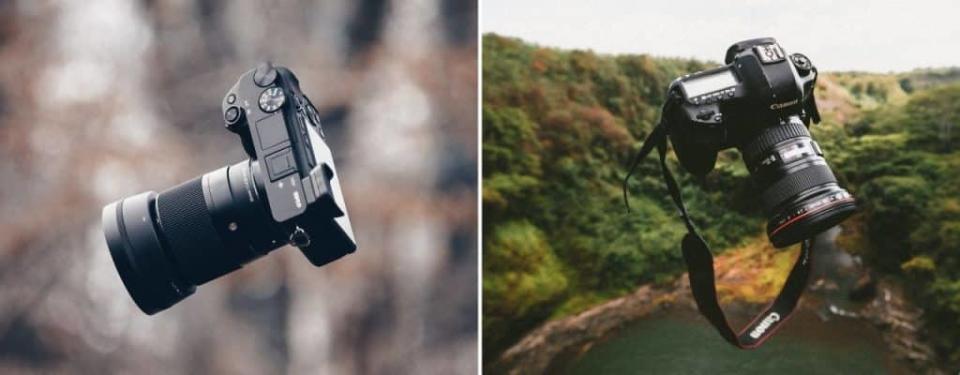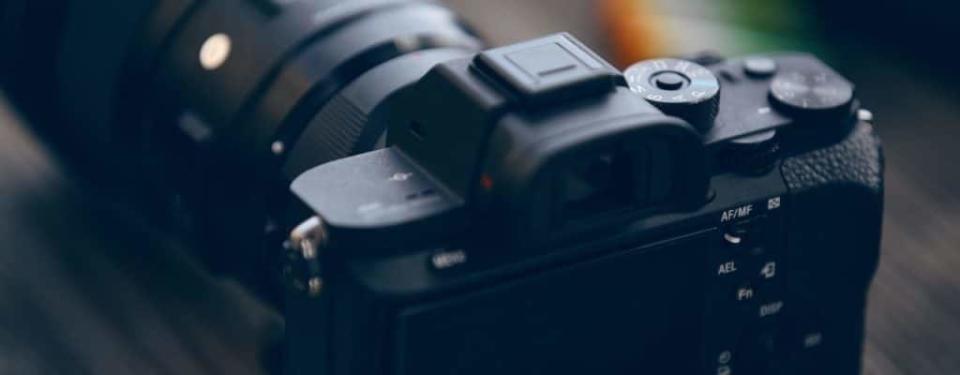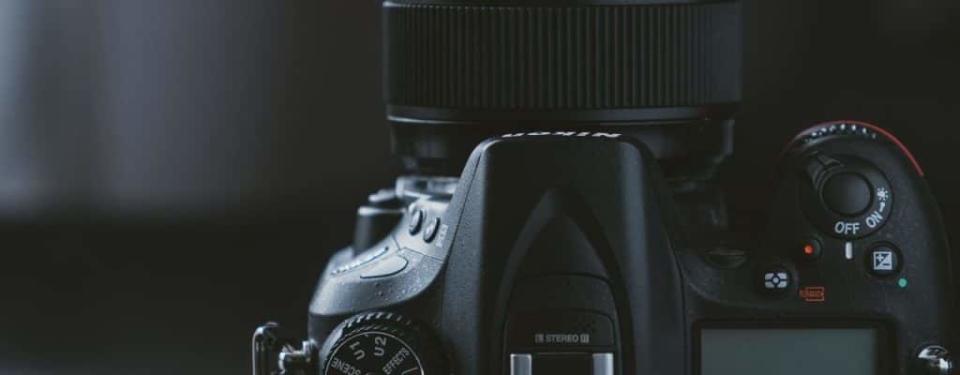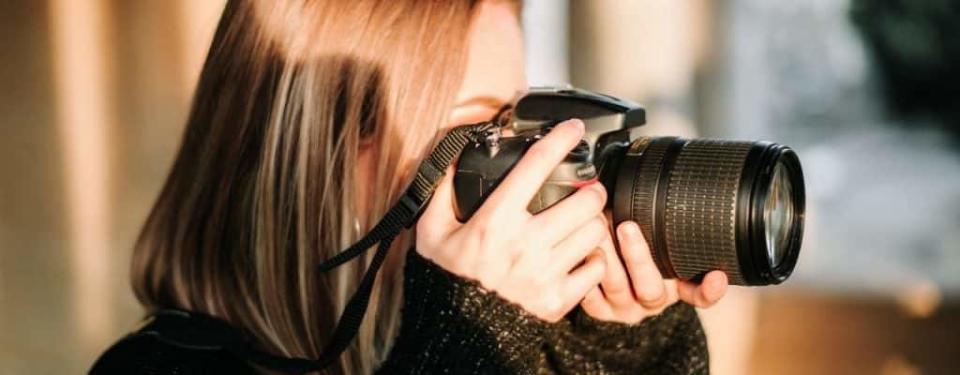Should You Buy a Mirrorless Camera or a DSLR in 2021?
Advertiser Disclosure: At Slickdeals, we work hard to find the best deals. Some products in our articles are from partners who may provide us with compensation, but this doesn’t change our opinions.

When shopping for a high-quality camera, you’ll quickly discover they fall into one of two categories – mirrorless or DSLR. Both come with their own set of pros and cons, making it imperative to do a bit of research before finalizing your decision. Cameras aren’t a cheap investment – pick the right one and it could last you the next decade. Pick the wrong one, and you might be upgrading sooner than you’d like.
Whether you’re an aspiring photographer or an up-and-coming Instagrammer, here’s what you need to know about mirrorless and DSLR cameras before making your next purchase.
Mirrorless vs. DSLR Overview

Understanding how both types of cameras work is the key to picking the right one for your style of photography. Both mirrorless and DSLR cameras can capture incredible images, although they go about it in dramatically different ways.
Digital Single-Lens Reflex (DSLR) cameras use a mirror inside their body to reflect light up to a viewfinder and your eye. Press the shutter release button and the mirror will move out of the way – revealing a sensor that captures your image.
Mirrorless cameras forgo the hefty optics, instead letting light shine directly onto their sensor. This image is transmitted to a display on the back of the camera for you to view – or to a digital viewfinder if your camera is equipped with one. Once you’ve found the right lighting and angle, pressing the shutter button will simply record what’s already present on the sensor.
Mirrorless Cameras are the Future
Make no mistake – mirrorless cameras are slowly replacing DSLR. That’s not to say your old DSLR won’t take good pictures anymore, but check back in 10 years and you won’t see many new DSLRs coming to market. Instead, companies such as Nikon, Sony and Canon are betting big on mirrorless technology, with several new products planned for release in the future.
DSLR Remains The Affordable Option
While mirrorless cameras might be the future, DSLR is still alive and well today. Their bulky size and aging design don’t impact the incredible images they’re capable of capturing, and photographers around the world are still keeping them in their repertoire.
Because they’re slowly being phased out, that means you’re more likely to find a DSLR on sale than you are a mirrorless camera. It also means the base price of most DSLR cameras is considerably less than similar mirrorless products.
Mirrorless Cameras Have the Size Advantage

Since mirrorless cameras don’t use the heavy components associated with internal mirrors, they typically weigh much less than their DSLR cousins. As mirrorless technology continues to improve, these types of cameras have come to be known as some of the slimmest professional cameras on the market.
Of course, that isn’t always a good thing. Some photographers have come to love the heft associated with DSLR cameras, as it balances out the massive lens attached to the front. Keep in mind that, while mirrorless cameras have managed to decrease their footprint, the same can’t be said for their lenses, which seem to only be getting larger as time goes by.
Many professionals also find DSLR cameras to be more comfortable to hold and manipulate, as they tend to include more physical buttons and require less fiddling with internal menus. Still, the benefits of a smaller camera are numerous – especially if you’re going to be lugging it around with you all day long.
DSLR Cameras Have Better Batteries

If you do plan on using your camera for extended photoshoots, DSLRs have a distinct advantage when it comes to battery life. All the fancy software inside mirrorless cameras requires a lot of power to keep running. For example, a mirrorless camera might be expected to take 300 images before draining its battery, while a comparable DSLR could take more than 400.
This varies from camera to camera and manufacturer to manufacturer, but you’ll find the trend generally holds true. If you’re seeking a camera that doesn’t require constant recharges or battery changes, you might need to think twice about a powerful mirrorless camera.
Viewfinders Aren’t Standard On Mirrorless Cameras
Believe it or not, the long-standard viewfinder isn’t a default feature on some entry-level mirrorless cameras. Instead of putting your eye to a viewfinder, you’ll look at a massive display on the back of the camera. Nearly all mid-tier and high-end cameras include a viewfinder in addition to the rear display, but anyone on a budget who needs a viewfinder might do better with a DSLR.
Conversely, a mirrorless camera’s rear display is a much more powerful tool than a simple viewfinder. The image you see on the display is closer to what your final image will look like than if you were looking through a viewfinder. Entry-level photographers will love the feature, as it means you won’t be in for a rude awakening when you pull your eye away from the viewfinder only to discover your entire image is washed out by poor settings or bad lighting.
If you don’t mind the lack of a viewfinder, the Olympus Pen E-PL9 could be a great fit for your needs. At less than $700, it’s a rather affordable mirrorless camera that’s more than capable of handling anything an aspiring photographer can throw at it.
Lens Selection Plays a Role in Your Decision
They’ve come a long way, but mirrorless cameras still tend to lag behind when it comes to lens selection. You’ll probably still have enough lenses to tackle any job, although you might need to pick up an adapter to use specialty lenses built for DSLRs.
Also, remember that lenses are much heavier than mirrorless cameras, so you could be walking around with a lens that weighs considerably more than the body. It’s probably not a dealbreaker, but it could lead to some ergonomic issues during extended photo shoots.
Meanwhile, a DSLR camera like the Nikon D780 has a wide variety of compatible lenses, and you’ll never run out of options to get the shot you’ve been looking for. Better yet – the D780 body is currently discounted by $300 on Amazon.
Mirrorless Cameras are Video Champs

Thanks to its high-tech software and direct exposure to the internal sensor, mirrorless cameras are far superior when it comes to shooting video. Not only do they take better recordings, but they’re bettering at capturing continuous images, with many entry-level products capturing up to 20 frames per second. Even when compared to some of the best DSLRs, there’s no denying mirrorless cameras are the champs when it comes to rapid image capture.
Anyone looking for 4K video that won’t break the bank should take a look at the Canon EOS M50. In fact, Canon markets the product as a perfect “Vlogging Camera.” At just $649, the mirrorless camera is a solid choice for both your video and photo needs.
Which Is The Better Purchase?

Mirrorless cameras are the future of the industry – and are almost universally considered to be a superior product. But just because it’s a better product doesn’t mean it’s a better purchase. All of its benefits must be weighed against its hefty price tag, and not all photographers need the advantages it brings to the table.
Who Should Buy a DSLR?
If you’re a hobbyist photographer who doesn’t plan on taking video with their new gadget – or even a budding professional photographer on a budget – a DSLR is an excellent choice. You’ll also need to consider whether a viewfinder is a dealbreaker. If it is, you might be better suited for using a DSLR.
One more thing to consider – many of the best DSLR deals are just for the camera body, meaning you’ll need to shell out some more cash to get a lens. Although that can still be a more affordable route, it’s worth keeping in mind if you’re looking for a one-stop purchase.
Here are a few of our favorites DSLR cameras:
Nikon D780 (body) – Sale Price: $1,996.95 | Regular Price: $2,296.95
Nikon D750 (Body) – Sale Price: $1,496.95 | Regular Price: $1,696.95
Canon EOS 5DS R (Body) – Sale Price: $1,499.00 | Regular Price: $3,899.00
Canon EOS 7D Mark II with 18-135mm f/3.5-5.6 IS USM Lens – Sale Price: $1,799.00 | Regular Price: $2,249.00
Nikon D850 (Body) – Sale Price: $2,496.95 | Regular Price: $2,996.95
Nikon D3500 W/ AF-P DX NIKKOR 18-55mm f/3.5-5.6G VR (Black) – Regular Price: $572.99
D5600 DX-Format – Regular Price: $596.95
Canon EOS Rebel SL3 (Body) – Regular Price: $599.00
Canon EOS Rebil T8i (Black) – Regular Price: $749.00
Who Should Buy a Mirrorless?
If you’re looking to do any sort of video capture or continuous shooting, a mirrorless camera is a far better option. It’s also attractive for its reduced weight, making it an ideal pick for a wedding photographer or a nature photographer who will be on their feet holding the camera most of the day.
Here are a few of our favorite mirrorless cameras:
Panasonic LUMIX G100 4K – Sale Price: $647.99 | Regular Price: $799.99
Sony Alpha a7 III (Body) – Sale Price: $1,698.00 | Regular Price: $1,998.00
Sony Alpha a7 III with 28-70mm Lens – Sale Price: $1,898 | Regular Price: $2,198.00
Canon EOS M50 with EF-M 15-45mm Lens (Black) – Regular Price: $649.00
Canon EOS M6 Mark II (Body) – Regular Price: $849.00
Canon EOS R5 (Body) – Regular Price: $3,899.00
More to consider:
Our editors strive to ensure that the information in this article is accurate as of the date published, but please keep in mind that offers can change. We encourage you to verify all terms and conditions of any product before you apply.

